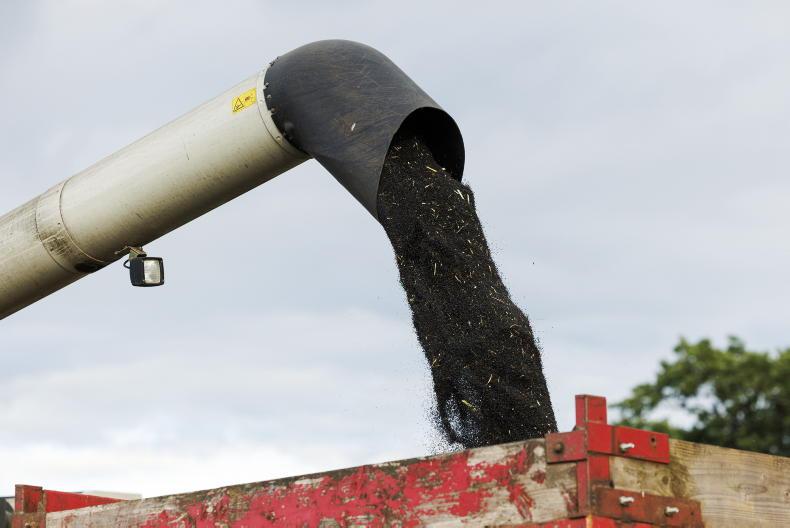The second phase of Dairylink is coming to an end and over the last three years the farmers involved have once again allowed real farm issues be described in real time online and in print.
It allows those other farmers producing milk during the winter learn what happens – the good, the bad and the indifferent.
Farmers who have engaged with us at farm walks, on webinars, by email etc are always very grateful to the programme farmers for allowing their business be profiled.
The following is a summary of some of the issues that have featured prominently in feedback from farmers and programme supporters.
1 Soil sampling
All Dairylink farms had all paddocks soil sampled every year. Not that long ago the thinking was soil sampling every three or four years was enough or maybe soil sampling a portion of the farm once a year and another portion the following year was adequate. The modern-day thinking is soil sample every paddock, every year, and use the information to make informed decisions on a nutrient plan for the year. The benefits to this far outweigh the cost and effort required. Whether you are in winter milk, seasonal milk or all year round, the resource you have in the land to produce feed for your animals is by far one of the most important assets on the farm.
Colour-coded maps are the way forward.
2 Liming off the pace
Lakeland’s Niall McCarron summarised the soil samples results for Lakeland suppliers taken this time last year (see pie chart).
The message is clear – not enough farmers are liming to improve soil pH, or to maintain lime status. In a year, like 2022, when fertiliser prices are high, lime can be one of the most effective and high-return investments you can make.
3 Breeding
Not enough farmers are taking control of breeding decisions. It’s slow, long term, but strategically very important for any dairy business. A farmer needs up to date information, it needs to be recorded in a sensible manner that allows the farmer, advisers and others working with the farm make informed decisions.
Many of the farmers who engaged with Dairylink haven’t the necessary software, or the national database etc, to allow them make informed decisions and many had no plan in terms of the type of cow they want for the future.
Clear signals are needed on what the market requires as breeding for fat and protein and better fertility have far more positive outcomes for the farm and the processor on every front.
4 Profitability
When milk price is good, the focus tends to lessen on costs at farm level. However, we see it now more than ever, a high milk price can get whittled away very quick with a high cost of production leaving less money in the farmer’s pocket. Only by keeping a monthly or quarterly tab on costs can you keep a close handle on them. It’s not what many farmers like doing, but it’s very important and needs to be done.
5 Animal health
On its own when everything is going alright on farm it might not be the most significant element, but when it goes wrong it can go very wrong. The focus is on prevention nowadays – yes there is a cost, but most farmers agree the cost is worth it as the spiralling cost of antibiotics, anti-inflammatories and the workload involved in caring for sick animals is very difficult for a farm to manage.
On a wider global scale we are moving to more prevention than treatment. Embracing no antibiotics in dry cow treatment needs skill, attention and good record-keeping. A herd health plan is the first step on this journey and we dedicated a whole webinar to the topic – well worth a listen and a read of the template which many farmers can edit so suit their own farm.
6 Forage management
There was a time when those producing winter milk thought grassland management wasn’t necessary as part of the system. That theory is now in the past – quality silage could be even more important for higher-cost winter milk production. Also, those on dry farms need to manage prolonged dry weather so timing is crucial and those on heavy farms need silage stocks as insurance. The grass wedge is as important for winter milk as for spring milk producers.
7 Replacements
We put weighing platforms on each Dairylink farm to regularly weigh animals. The weights are not important, but how you manage the results is important. Preferential grazing can bring the bottom 10% of heifers in line with the average if managed correctly for very little additional cost other than separating them from comrades for a short period. Getting weight records draws a line in the sand between animals and forces you to make a decision while also allowing more informed animal health decisions around dosing etc.
8 Winter feed audit
Quantity and quality is money in the bank for winter milk producing farms. A farmer that is buying forage can often get stung on price, quality and additional workload. Doing a winter feed audit in summer can quickly alert you to problems that need to be sorted before October feeding kicks in. Often if a quantity and quality audit is completed in time it gives you a chance to do something differently sooner rather than later, which often leads to a better outcome.
9 Margin over concentrate
It is a measure, which is better than no financial measure. However, it’s only one part of the whole picture at farm level as other costs can have a very significant effect on farm profits also. Workload and getting help is often a bigger problem for some farms and while margin over concentrate might be good, burning the candle at both ends can take a bigger toll on a farm business producing milk 365 days a year. Stand back or get someone to stand back and assess your business on what exactly you are left with after all is said and done.
10 Stocking rate and the environment
Higher stocking rates are coming more and more under the spotlight from a production cost point of view, but also an environmental point of view. Surplus nutrients not used correctly are a waste of resource and a threat to the environment. The environment sustainability wave is just starting to get into gear on winter milk farms and positive developments on the environmental side of the house can often have positive production outcomes also. This will come more into focus in the next phase of Dairylink.
Interested in the next phase?
Anyone that wants to take part in a new phase of Dairylink needs to raise their hand and make contact with dwright@farmersjournal.ie.









SHARING OPTIONS